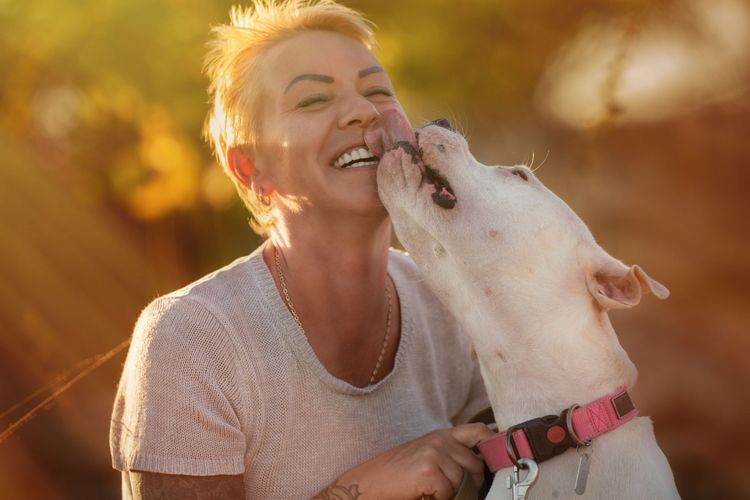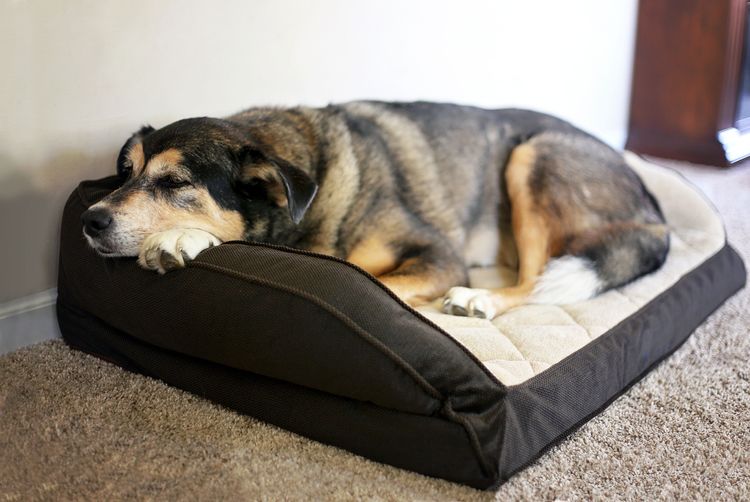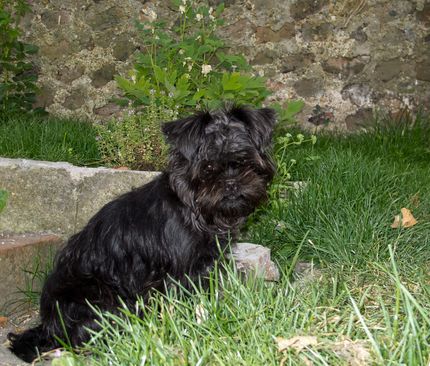First aid for dogs - what you should know
If you have a driver's license, you had to take a first aid course. This may have been a while ago. And if you don't regularly refresh your knowledge, you probably won't be able to react properly in an emergency. If a four-legged friend gets into an emergency situation, there are a lot of different things to consider when providing first aid than there are for humans. Many non-profit organizations that train first aiders for humans now also offer courses in first aid for dogs. These include, for example, the Arbeiter-Samariter-Bund (ASB) or Die Johanniter.
However, one thing should be clear: First aid never replaces a trip to the vet. It is only an immediate measure to prevent the animal's condition from deteriorating until professional help can be given.

General measures
Basically, you should remember that an injured dog is in pain and scared. Even the most loving dog may react differently than usual under these circumstances. It might try to flee or bite because it finds the treatment unpleasant or threatening. That's why you should take the following to heart:
- Approach the dog carefully and with slow movements.
- Breathe deeply and audibly. Let your shoulders drop as you exhale. This relaxes you and signals to your dog that it can trust you.
- Speak softly and reassuringly to it, even if it is difficult for you in this situation.
- Lay it down on its uninjured side on a blanket.
- Leash the dog and possibly tie his muzzle or put a muzzle on it in case it bites around
However, there are situations in which the muzzle must never be tied:
- If the dog is panting heavily
- If the dog is vomiting or there is a possibility that it might vomit.
- If it is injured in the mouth area
- If the dog is unconscious
- If the dog has suffered a heat stroke
Bite injuries
They are among the most common emergency situations that dog owners face. Even a minor scuffle can end in bite wounds that can cause nasty infections if left untreated. Some bite wounds are treacherous. This is because there are dogs whose wounds are not immediately detected because of the texture of their fur. Some four-legged friends also don't bleed immediately, initially giving the impression that the scuffle was inconsequential.
This is how you can help:
- After every scuffle, check the dog thoroughly for injuries.
- Apply a pressure bandage in case of heavy bleeding. To do this, place a sterile compress on the wound, cover it with a wrapped gauze bandage or, if necessary, a pack of tissues, and then secure the whole thing with a bandage.
Cuts
This also happens frequently in everyday dog life: For example, the dog steps into a piece of broken glass. It limps or can no longer walk. It may also be bleeding.
This is how you can help:
- Remove the foreign body (shard, splinter, etc.).
- Stop heavy bleeding with a pressure bandage
- Even if the wound is not bleeding, apply a paw bandage. Put swabs (cotton pads will do) between the toes. This relieves the pain and prevents dirt from getting into the wound.
Foreign objects
There are dogs, especially puppies, that will eat anything - rocks, buttons, etc. But even adult dogs catch pointy chicken bones that can be dangerous to them. Spareribs bones are even worse. They can cross over in the esophagus and even perforate it. If the dog has a bone in his throat, you'll notice it very quickly. He is gasping and can hardly breathe. The situation is different with smaller foreign bodies. There, the symptoms such as vomiting, constipation or (bloody) diarrhea can also occur with a time delay.
This is how you can help:
- Remove the foreign body if possible
- Get to the vet as quickly as possible. He can determine with x-rays where and in which place the foreign body is located and initiate appropriate measures.
Poisoning
It is not always dog haters who sneakily put out poison. In many cities, unwanted rodents are attacked with rat poison. This must be pointed out at the respective places, but then Bello may already have caught something. Some garden owners spread slug pellets or fertilize with blue corn. A poisoned dog often vomits and has diarrhoea (with or without blood). Seizures and shortness of breath may also occur. A fairly sure indicator of poisoning is noticeably pale gums.
Here's how you can help:
- In cases of poisoning, there is an acute danger to life. Therefore you should go to the vet immediately
- Charcoal tablets can be an effective first aid measure. However, many dogs in this condition often take nothing more to eat.
Heat stroke
It goes without saying that dogs should not be left in the car or chased around next to the bike when temperatures are high. During the heat, any exertion is to be avoided! However, dogs can still suffer heat stroke in high temperatures. You can tell by the fact that he is panting heavily, often salivating, and sticking its tongue out excessively. It may even stagger and collapse.
Here's how you can help:
- Take the dog to a cool place
- Provide it with cool drinking water
- Never pour water on the dog when it is unconscious.
- Slowly pour cool (not ice cold) water over the dog's paws.
Shock
Almost all emergency situations can also cause a dog to go into shock. It appears weakened, panting heavily, and its heart is racing. Often its ears and paws are cold. It may even be unconscious.
Here's how you can help:
- Place the dog on a warm surface on its side and cover it if necessary.
- Free the airways: Stretch the head a little and pull the tongue out of the muzzle.
- Keep the back part of the body high, but the head low.
Exception: If the dog suffers from respiratory distress, the head must be kept high!
Resuscitation
Shock can cause respiratory arrest. In this case resuscitation is necessary. However, without previous training, e.g. in a first aid course, the success of this action is questionable.
This is how you can help:
- Put the dog on its right side
- Form index finger and thumb into a ring, place around the dog's nostrils and blow into it
- Perform chest compressions: Depending on the size of the dog, use one or both hands to press on the chest in short bursts three to five times. Repeat three times, then breathe again. Continue in this 3:1 alternation until the dog is breathing spontaneously again and medical help can be given.
















































